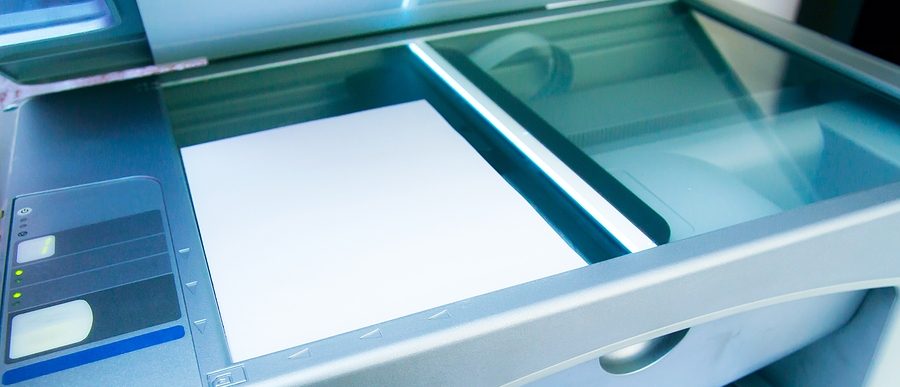
Has your business decided to modernize how you store and maintain your records? One of the first steps is to digitize your documents. This process typically follows a system of extensive document scanning procedures that, without the proper equipment or know-how, is nearly impossible to execute. Instead of attempting this on your own, you can partner with a trusted and experienced scanning service to make sure the process is done right.
In this blog, we’ll go through a detailed overview of the document scanning procedures professionals follow, as well as the most important thing you can do to prepare your documents for scanning.
Our Top Tip to Prepare Your Documents for Scanning
Before sending your physical files to be scanned, the best thing you can do to help your scanning provider is to thoroughly organize your documents. Through this process, you’ll get a clear picture of how much needs to be scanned, which helps your scanner provide the most accurate quote possible.
Additionally, you can create an index of your documents to reference once everything is packed away. This makes it easier to navigate and locate your documents if someone needs a piece of information during the scanning process.
If you need assistance with packing your documents up, Record Nations can connect you with a trusted service provider that can help with your packaging, scanning, and other document management needs.
The Document Scanning Procedures Behind the Digitization Process
Document scanning procedures usually encompass a long list of steps. The best scanning companies follow these procedures to help provide the highest quality digital documents and best service possible. Once you’ve prepared your documents for the process, here’s what your scanning service does to digitize your business’ documents.
Document Pickup & Transportation
Upon pick up, each box of documents is assigned a unique barcode. A complete inventory list is also created to help you and your provider track the progress of your documents mid-scan. Once your documents are picked up, everything is transferred to the scanning facility. During this time, the scanner will have measures in place to ensure the confidentiality (and compliance, when necessary) of your data so your information will be secure every step of the way.
Preparation
Before scanning can begin, your documents and their order must be properly prepared. This involves the removal of any remaining staples, paperclips, or other items that could interfere with the scanning equipment. Sticky notes should either be taped down or prepared in a way that ensures they’re included in the final scan. Torn pages should also be repaired wherever possible. If you include any bundled documents in your shipment, they should be separated and arranged in chronological order to ensure the highest quality digital files.
Scanning
When your provider starts the actual scanning process, a small selection of your documents are scanned first to ensure everything is calibrated and ideal image quality is achieved. This sample scan helps set the standard for all remaining documents.
Commercial-quality scanning equipment is normally used across all document scanning procedures. Documents are scanned at a high resolution (300 DPI or higher) to ensure clear digital images and saved in a wide range of formats, including portable document format (PDF) and tag image file format (TIFF).
Indexing
Once the document scanning part of the process is complete, your provider begins indexing the digital files. This step is essential in organizing your business’ files and making them easily searchable. Identifiers such as names, invoice numbers, or IDs are extracted using a combination of technologies. These can include Optical Character Recognition (OCR), Optical Mark Recognition (OMR), barcode readers, and manual data entry for fields that can’t be automatically extracted.
Quality Assurance
The last thing you want from your scanning provider is poor quality or incomplete scans that make it impossible to read or extract your information. The best scanning providers have a quality assurance process in place to verify all your documents have been scanned, and that each scan is high quality and fully legible. At this time, if anything needs to be rescanned, the provider will catch it prior to sending any official files your way.
Digital File Delivery
After your scanning service provider finishes their document scanning procedures and everything is properly digitized, you’ll receive your files. If you have a records or document management system in place, your files can be uploaded directly to that or delivered to you via an encrypted hard drive. Many businesses don’t have a dedicated system or software in place, so providers can also send everything via a Secure File Transfer Protocol (SFTP) to help ensure the safety of your data.
Document Return or Destruction
Once you have your digital files in hand, you can decide whether or not you want your original documents returned to you. Note that some businesses have state-specific requirements around record retention, so it’s key to research any requirements your business may be subject to.
If you opt to keep your physical records, they’ll be repackaged into the same boxes and returned to you, along with the inventory sheet you provided at the beginning. If you decide to transition to a fully digital system, your documents can be shredded and properly destroyed by your scanning service provider to help prevent data breaches and ensure your security.
Record Nations’ Document Scanning Solutions
Are you ready to modernize how your business stores and maintains its essential documents? Record Nations is here to help. For the past twenty years, we’ve been dedicated to connecting both businesses and individuals with the best scanning provider for their needs. Regardless if your document needs are big or small, Record Nations can help find the right scanning service for you.
Get started by filling out our form or giving us a call at (866) 385-3706 today.












